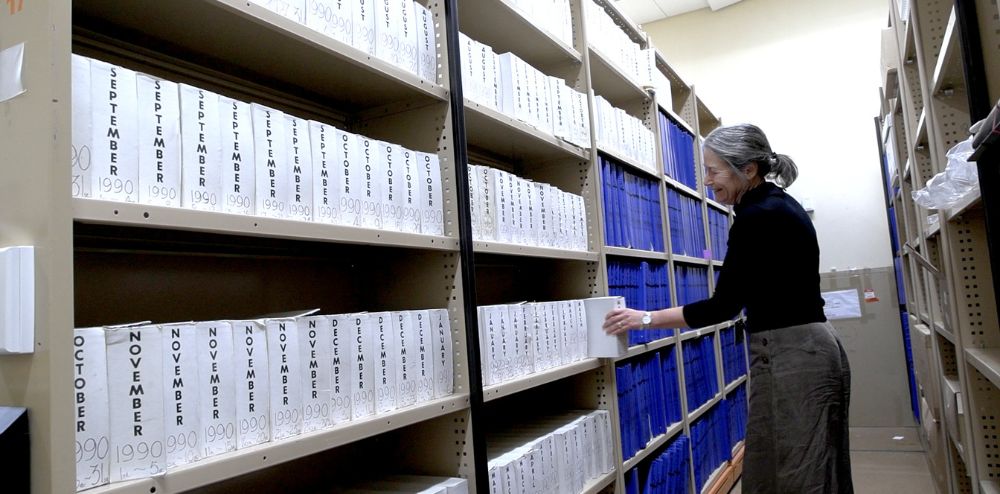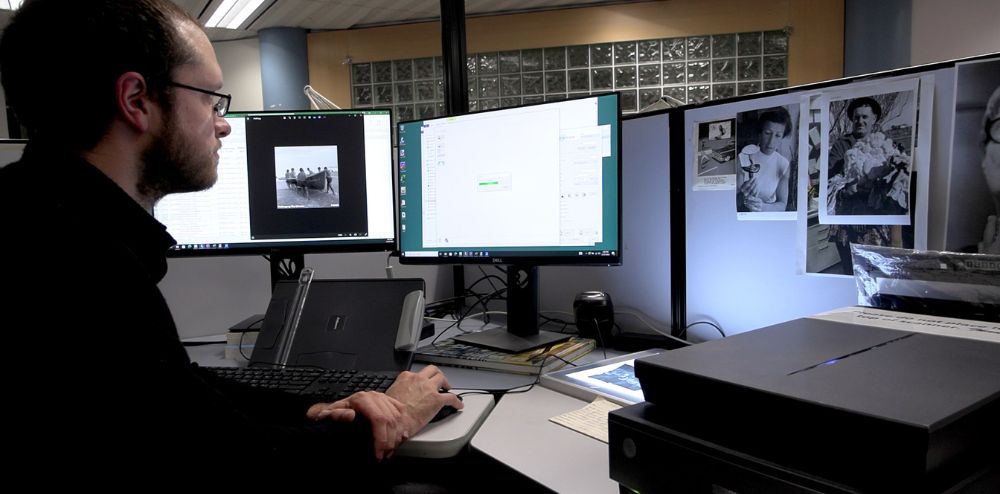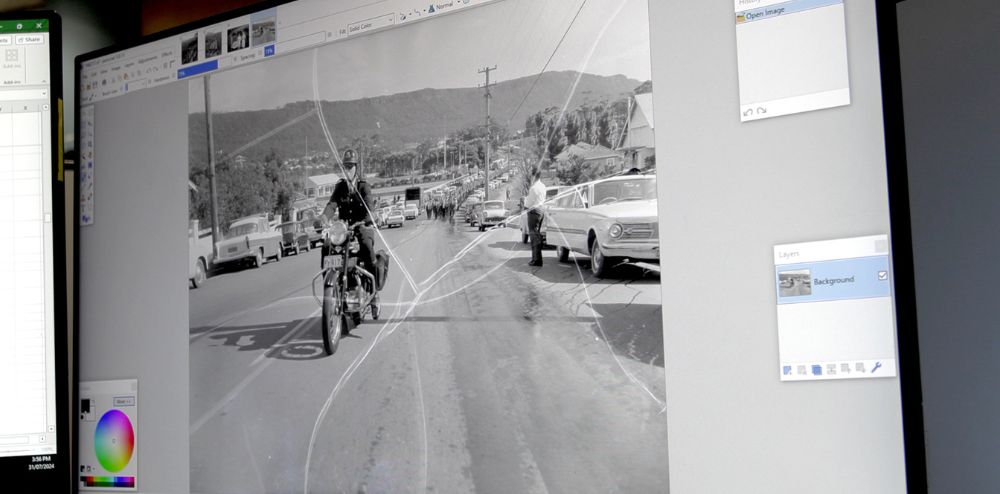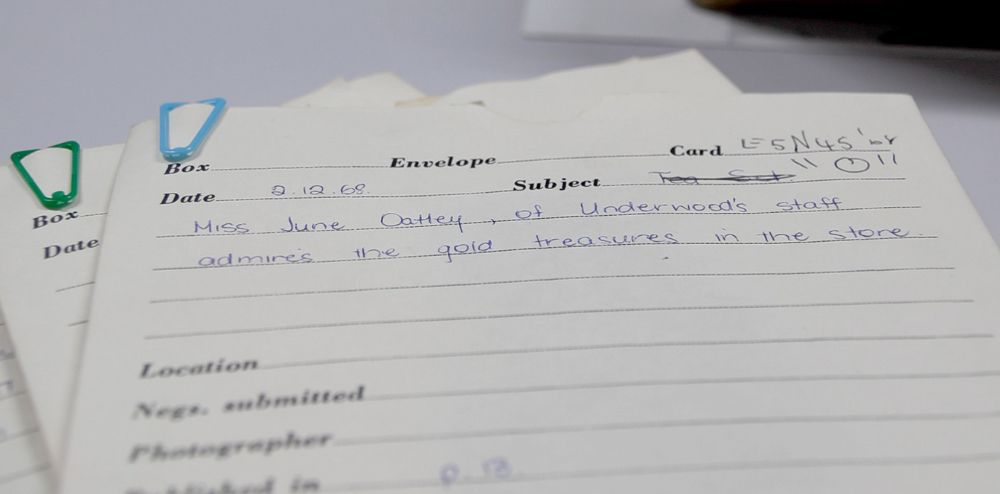It's easy to think that everything these days is available online. The truth is that in order for us to access historical documents with the click of a mouse, we need someone to take the time to upload and catalogue.
This is the work that Hilary Powell, Wollongong City Libraries Local Studies Team Leader, is doing. Winding back the compactus on level 1 of the Wollongong Library, Hilary gives a sneak peek at the collection of negatives waiting to be digitised.

Image: Hilary Powell explores the compactus which houses shelves and shelves of negatives waiting to be digitised.
"These are all negatives from the Illawarra Mercury Image Collection. The collection is comprised of photos, negatives and photograph indexes taken by the paper between 1962 to 1998," Ms Powell said.
"Back in 2014, the Illawarra Mercury were looking for a home for these valuable resources and we were happy to receive the collection as a donation. Originally it filled 25 filing cabinets and each of these had four drawers. Plus, there were shelves and shelves of negatives."
Hold the phone, what's a negative?
For those used to smartphones and selfies, negatives date back to the age of the camera and physical film. When a photographer took a photo, the image was captured and reversed onto film.
To turn a negative into a photo, these were printed using a dark room and an enlarger. Like digital files, a single negative could be used to generate many photo prints.
"That's what makes this collection so valuable, the negatives. Often Mercury photographers would take lots of photos, but only one or two might be used in the paper. So, having the negatives, offers a window into our past that would have been forgotten," Ms Powell said.

Image: Library staff member, Michael Manzini, digitses damaged negative.
To date, the Wollongong City Libraries team has digitised more than 40,000 photos of the Wollongong area, dating back to the 1800s and made available online through the Library catalogue. To date, 12,000 of these images come from the Illawarra Mercury donation.
Now the team face a new but unsurprising challenge, vinegar syndrome.
What is vinegar syndrome?
Vinegar syndrome refers to a chemical reaction that can happen during the deterioration of cellulose film. When cellulose decomposes, the negatives react with moisture to form acetic acid, producing a vinegar odour.
Once vinegar syndrome has started, it can't be reversed or stopped. Instead, the reaction continues to speed up over time. It's also contagious.
"Vinegar syndrome can spread from one box of negatives to neighbouring boxes. When we first discovered the collection was showing signs of vinegar syndrome in 2019, we moved the impacted boxes down into the library basement to try and stop the spread," Ms Powell said.
"What we're dealing with are negatives from the 1960's that are already showing signs of vinegar syndrome or are at risk of developing it soon."

Image: A negative from the collection suffering from vinegar syndrome.
In July 2024, Wollongong City Libraries received $156,378 from the Public Library Infrastructure Grants 2023/2024 to work on saving the negatives in the collection which are affected by vinegar syndrome.
For Hilary and the Local Studies team, it's now a race against time.
"We're grateful to receive this funding from the State Library of NSW as it will go towards digitising and preserving approximately 10,000 at risk negatives before they deteriorate to a point where they're lost forever," Ms Powell said.
The work ahead
With the funding secured, the team will be using the money to purchase cold storage equipment to store impacted negatives which will slow down the speed of deterioration. It will also be used to employ library staff to do the time intensive work of scanning, digitising, and cataloguing the negatives.
"Scanning is the easy part; the hard part is cataloguing the images. Without detailed cataloguing, there's no way of discovering the images," Ms Powell said.
"While some of the negatives have been labelled clearly, many have not. It really came down to whether the photographer did their due diligence with labelling their photos. Often, library staff have to do a bit of research, dive into the old Mercury papers on microfilm to understand the story behind an image.

Image: Date: 2.12.68. Card: E5N45'68. Subject: Miss June Oatley, of Underwood's staff, admires the gold treasures in the store.
Part of the grant funding will also be used to digitise and transcribe the old Illawarra Mercury negative indexes.






